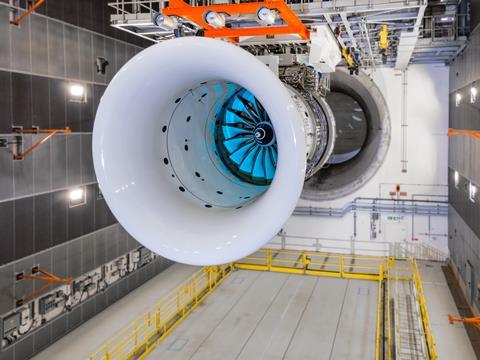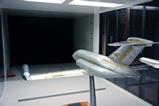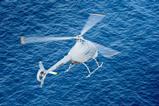Rolls-Royce has reiterated its intention to re-enter the market for narrowbody engines using technology from its UltraFan demonstrator in partnership with another supplier.
The UK propulsion specialist has been absent from the single-aisle segment since it sold its interest in the International Aero Engines V2500 programme to Pratt & Whitney in 2012.

But Rolls-Royce believes that the performance gains possible through the UltraFan’s geared fan architecture and advanced systems will allow it to take on the current narrowbody engine duopoly of CFM International and P&W.
Citing the high barriers to entry, chief executive Tufan Erginbilgic says Rolls-Royce is “probably the only one that can go in” to challenge the incumbent pair.
“It is an opportunity, there are only a few companies in the world who can actually do that,” he told a capital markets event on 28 November. “And with a partnership approach I believe it can be a profitable place.”
Any partnership would “derisk a little bit” the investment required, Erginbilgic, says, adding: “A partnership needs to work – if it doesn’t we can consider alternatives because we are actually bringing a [new] technology into this.”
However, he stresses that any return to narrowbody engine supply must be profitable or Rolls-Royce will not pursue the opportunity “because we do not need to do it”.
“At the right time, with the right partner, we will decide the next steps,” he adds. Rolls-Royce has on multiple occasions in recent years expressed optimism at a potential return to the narrowbody market, likely with a partner on board.
Rolls-Royce says the UltraFan architecture is suitable for narrowbody or widebody applications needing thrust in the 25,000-110,000lb range (111-489kN).
During recent ground tests, the company ran its UltraFan demonstrator to its maximum thrust of around 85,000lb.
In addition to informing the design of the next generation of engines, Erginbilgic says “we can retrofit some of the technologies into today’s engines… to increase time on wing and fuel-burn efficiency”.
In the meantime, the engine maker is focussed on increasing the time on wing for its existing engine portfolio by an average of 40%.
Initiatives include improvements to component design, such as a new high-pressure turbine blade which is already being rolled out for the Trent 7000 on the Airbus A330neo.
The same HPT blade will be available for the Boeing 787-powering Trent 1000-TEN next year when it has been certificated by the US regulator.
Extensions to the lifespan of life-limited parts, based on in-service sampling and digital modelling, also promise an 8% time on wing improvement for the Trent 1000 and 7000.































